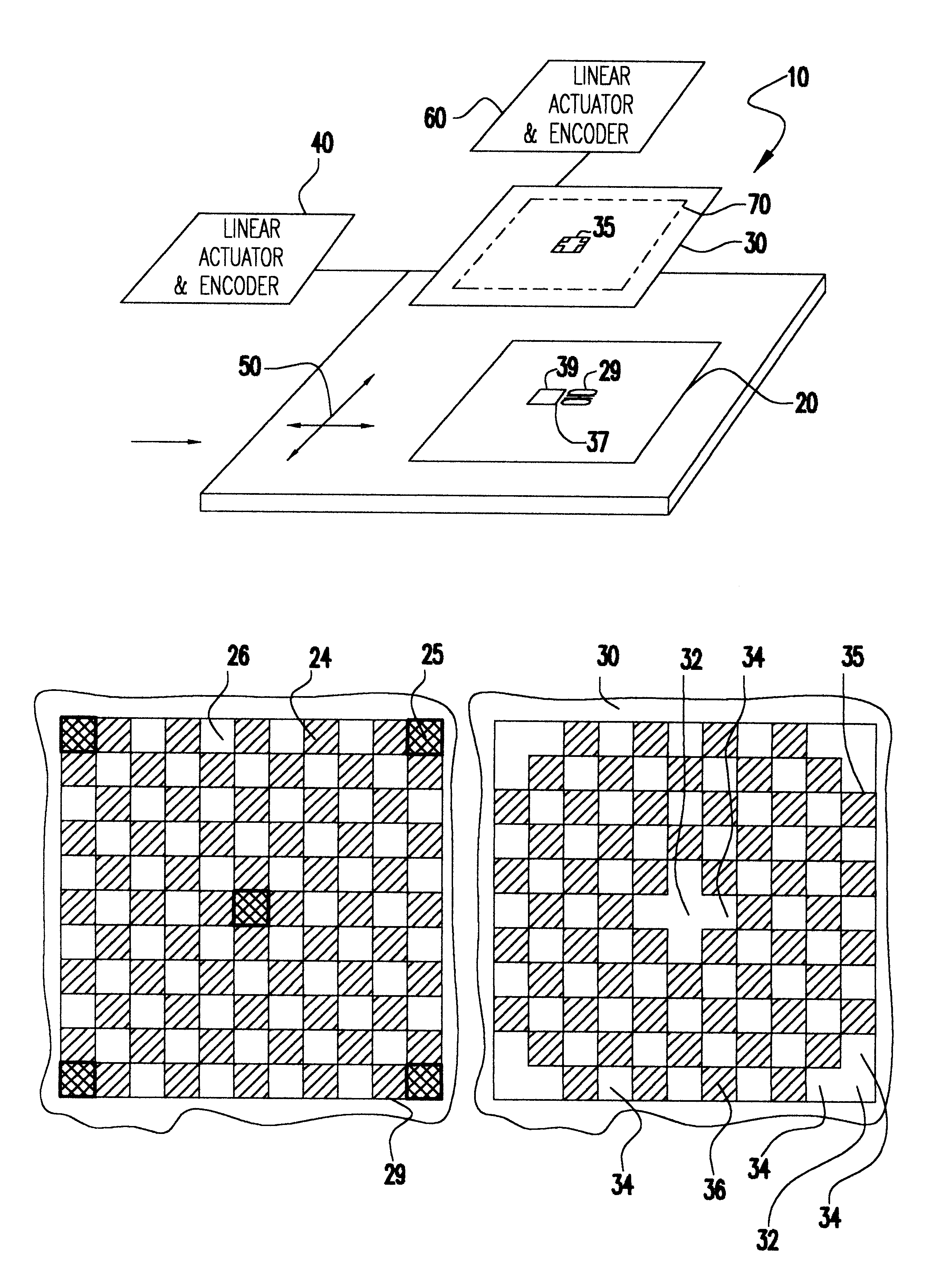Variable transmission reticle for charged particle beam lithography tool
a technology of electron beam and lithography tool, which is applied in the direction of electrical discharge tubes, nuclear engineering, electrical apparatus, etc., can solve the problems of large integrated circuits, high cost, and high cost of single exposure, and achieves the effects of large-scale integrated circuits, high cost, and high cos
- Summary
- Abstract
- Description
- Claims
- Application Information
AI Technical Summary
Problems solved by technology
Method used
Image
Examples
Embodiment Construction
Referring now to the drawings, and more particularly to FIG. 1, there is shown an exploded view of an adjustable transmissivity compound reticle arrangement 10 in accordance with the invention. The compound reticle comprises at least two reticle layers 20, 30, which are preferably placed in close proximity with one layer overlaying the other. One of the reticle layers, preferably reticle layer 30, is movable relative to the other reticle layer by a linear actuator 40, such as a small piezoelectric motor. A position encoder can also be provided in combination therewith to improve positional accuracy and / or provide monitoring of the position of reticle layer 30. An additional linear actuator and position encoder 60 may also be provided for translation in orthogonal directions. Reticle layer 30 in combination with reticle layer 20 thus functions as a shutter as will be described below.
The order in which the layers are stacked is substantially immaterial to the practice of the invention...
PUM
 Login to View More
Login to View More Abstract
Description
Claims
Application Information
 Login to View More
Login to View More - R&D
- Intellectual Property
- Life Sciences
- Materials
- Tech Scout
- Unparalleled Data Quality
- Higher Quality Content
- 60% Fewer Hallucinations
Browse by: Latest US Patents, China's latest patents, Technical Efficacy Thesaurus, Application Domain, Technology Topic, Popular Technical Reports.
© 2025 PatSnap. All rights reserved.Legal|Privacy policy|Modern Slavery Act Transparency Statement|Sitemap|About US| Contact US: help@patsnap.com



